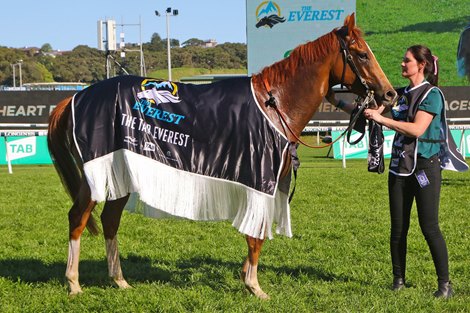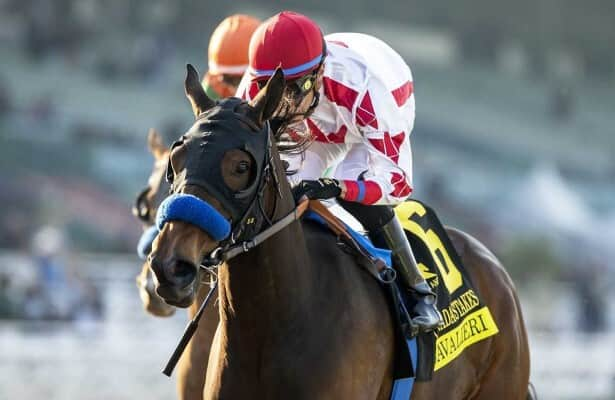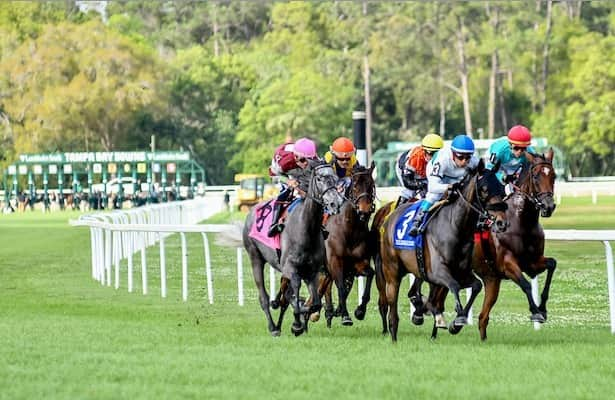News that 12 Sydney races will receive black-type upgrades—aside from elite status for 1,200-meter (about six-furlong) The Everest (G1) and Melbourne’s All-Star Mile (G1)—has sparked a concerned reaction from sections of the Australian breeding industry.
Despite the ongoing absence of a functioning pattern committee in the country, Racing Australia announced Oct. 9 the slot race The Everest and the “special conditions” All-Star Mile would become black-type races, going in at the top level with immediate effect.
While that was guardedly welcomed by the powerful Thoroughbred Breeders NSW, news also emerged Wednesday about status upgrades for a dozen more races—all in Sydney—prompting further wariness. They come despite no news regarding downgrades elsewhere in Australia’s black-type pyramid.
In the wake of the news, leading industry figures reiterated calls for the revival of Australia’s pattern committee to make such decisions, comprising representatives from breeders, auction houses, and handicappers from each state.
One former long-serving committee member said it appeared the pattern had been “hijacked” by state racing authorities in order to advertise their own races, ignoring its design of showcasing the merits of horses and their offspring at yearling sales, and therefore posing a threat to international buyers’ confidence in Australia’s elite race structure.
The new status for the Oct. 19 AU$20 million Everest and March’s AU$2.5 million All-Star Mile—which will carry half the prize money it had in 2022—bring the number of top-tier races in Australia per season to 76.
It follows an apparent rapprochement between the formerly warring major states of New South Wales and Victoria, which also comes after Racing NSW’s boss Peter V’Landys joined the RA board.
In a brief statement, RA said: “Following the recent agreement and adoption of the Australian Black-Type Guidelines by the Racing Australia Board, a review of races under those guidelines is being conducted.
“As a priority, the following races have been determined to have achieved the criteria and will be recognized as a group 1: The Everest. The All-Star Mile.
“The All-Star Mile and The Everest race upgrades have been ratified internationally. Whilst these upgrades will take immediate effect, further analysis and review of all black-type races is being undertaken with the expectation that further announcements will be made in the near future.”
While few doubt The Everest and All-Star Mile have rated highly enough to be declared group 1s in their past three runnings, many breeding industry figures are understood to be concerned that ratings may become the only criteria for black-type status decisions, with no discretion exercised.
TBNSW president Hamish Esplin, while welcoming the group 1 status for The Everest and All-Star Mile, questioned how Wednesday’s many announced decisions were reached, and why the process was conducted behind closed doors.
“On one hand, it’s fantastic to see the Australian pattern system re-enlivened. It’s been far too long that it’s being laying dormant and subject to politics between the various states,” Esplin told ANZ.
“But there is a reason why the term ‘pattern’ has been used for 50 years to describe the nomenclature for elite racing. And that is because all the pieces must fit together.
“No breeder wants a proliferation of too much black-type racing, because it undermines the nature of elite racing.
“You have to ask, are these races being upgraded because of the decision of a properly convened committee, with a system of ratings that applies in Asia and the rest of the world?
“Also, like all elite sport, a system of promotion must by definition have a system of relegation. So where does all this leave the other black-type races, especially in the spring?
“And do we now live in a world where we just recognize baseline ratings above a definition of what a group 3 or group 2 race should be, and if any race clears that hurdle it is given that status?
“Any casual observer can see where this will lead, and that is a proliferation of races which might carry big prize money but which do nothing for the history or the larger engagement of the sport within its traditional parameters.”
Esplin said he was “definitely worried” having too many black-type races would dent the confidence of foreign buyers in Australian yearlings.
“The first port of call by any investor in any country is the catalog,” he said. “That why catalogs have a standardized format throughout the world.
“Within the cataloging is a narrative—what does this particular race mean? So yes, I’m very concerned for what this could mean for international buyers at Australian yearling sales.”
Think About It wins the 2023 Everest Stakes at Randwick Racecourse












